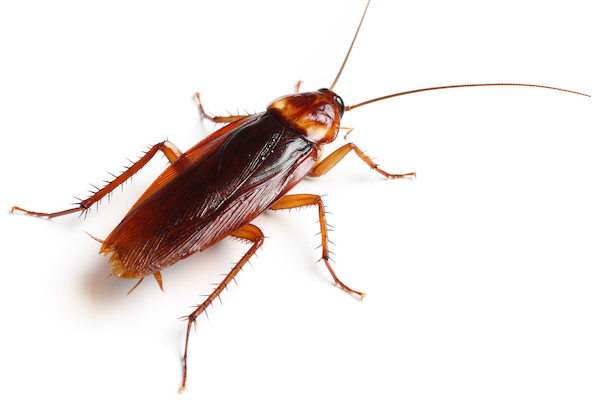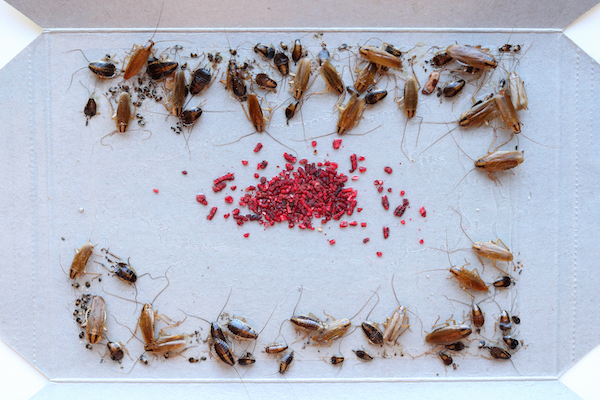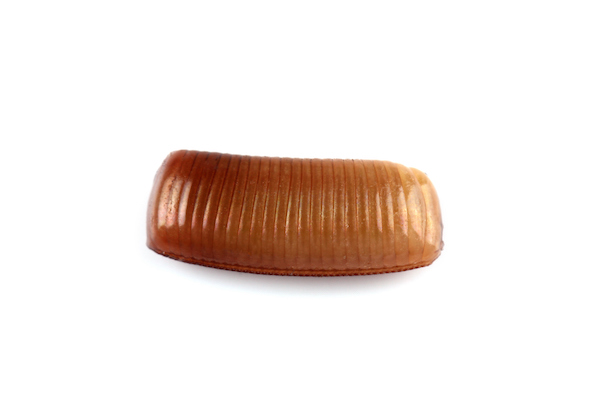
Cockroach Control Experts – Geelong, Surf Coast and surrounding areas
Cockroach control is essential. Cockroaches are dirty and carry a number of diseases, such as Salmonella and E.coli. They also produce a large number of allergens that are a known cause of asthma in children. So, it’s important to protect your family from cockroaches.
Geelong Pest Control can provide specialised cockroach control treatments to manage cockroach infestations and provide long-lasting protection, even for German cockroaches.
Call us now to control your cockroach problem…
Our Professional Cockroach Treatments
Our approach to cockroach treatments depends on whether the problem is large cockroaches (American or Australian cockroaches) or small cockroaches (German cockroaches). Our standard cockroach treatment applies to large cockroaches, whereas German cockroaches require a more specialised treatment.
Standard cockroach treatment
Generally speaking, the large cockroach species live outside and come inside looking for food and moisture. They live in the leaf litter, around drains and garbage bins. They will set up home in the kitchen, laundry and bathroom given the chance. Although they generally like moist areas, they can also be found in roof voids, under the insulation.
What areas do we treat?
Generally, we will use a spray to most areas, although we use powders in the roof void and some cracks and crevices. Occasionally we will use cockroach baits if they have set up home inside the home.

German Cockroaches
German cockroaches (the “small ones”) only live inside buildings. They are very small – the young are only 1-2mm when then hatch and adults are only 15 mm long. They hide in the smallest cracks and crevices, only come out and night and breed rapidly. As such, an infestation can develop quickly without it being noticed. If you’re seeing German cockroaches, the likelihood is you have a major infestation!
To treat German cockroaches, we use a combination of specialist cockroach sprays and cockroach baits. We target cockroach hiding places and the baits are useful to target the cockroaches we cannot see. Our treatments are generally focused on the kitchen and other areas where they have been identified in the home.

How do cockroach baits work?
Cockroach baits consists of an attractive cockroach food and slow acting insecticide. It’s important it is slow acting, as it allows the cockroaches time to return to their “cockroach nest” before it starts to have an effect. These dying cockroaches spread the insecticide to other cockroaches in the harbourage – other cockroaches eat their vomit and droppings! As the young cockroaches don’t leave their hiding places, this transfer of cockroach bait is essential to gain complete control.
Although individual cockroaches will take less than a day to die, it takes time for the bait to be found by all the cockroaches and spread through the population. It will generally take 1-2 weeks to gain complete control.
What to expect from our cockroach treatments?
Our spray and dust treatments for large cockroaches will have an immediate effect, and you are likely to see a large number of dying cockroaches after we finish the job (these should be swept up). However, it will take longer to completely control the infestation, as it takes time for all the hidden cockroaches to emerge and come into contact with the treatment. The insecticide on the treated surfaces will last for many months, which is why we can offer our residential customers a 6-month warranty, even for German cockroaches.
Cockroach baits take longer to control the cockroach population. Typically, they will take 1-2 weeks, although it can take longer for heavy infestation.
German cockroaches – A word of warning!
As German cockroaches are often brought into a residence by accident, it’s important to take steps to prevent a re-infestation. Typically, German cockroaches are introduced into homes inside cardboard boxes – they love cardboard! Check cardboard boxes for cockroaches and egg cases, including inside the cardboard flutes. Don’t store the cardboard boxes inside the house. (Cardboard boxes are also a favourite hiding place for silverfish).

What our customers say

What are the signs of a cockroach problem?
The occasional large cockroach will wander into your home at night, but that doesn’t mean you have an infestation. As cockroaches are nocturnal, there are some other signs of cockroaches that may indicate you have a problem:
Cockroach droppings
Large cockroach droppings are dark, oval shaped, about 1-2 in diameter. They will often be found in a group on cupboard shelves.
German cockroaches, tend to leave brown spots rather than solid droppings. These brown spots will accumulate close to their hiding spots and will be visible in the corners of cupboards.
Cockroach damage
Cockroaches will eat almost anything and so cause damage to a wide range of materials, in particular paper, cardboard and clothing. Their chewing can sometimes be confused for silverfish damage or even rodent activity.
Cockroach smells
A cockroach infestation has a distinct, unpleasant smell. This is the smell of cockroach droppings and their shed skins. Cockroach droppings and skins also cause allergic reactions and are a common cause of asthma in infested apartment blocks.
Cockroach egg cases
Cockroach egg case (ootheca) will contain 20 or more eggs, depending on the species. They are brown, cylindrical and around 1-2 cm long. Some species carry the ootheca until the eggs are ready to hatch, other species place the egg case in a safe place. Cockroach egg cases inside cardboard boxes are common way cockroaches are introduced into houses.
How to prevent cockroach problems…
- Prevent large cockroaches entering the building by having well-fitted insect screens on doors and windows, and sealing any other cracks which are potential entry points.
- Check incoming cardboard boxes for cockroaches and cockroach egg cases.
- Make the inside of your home less attractive to cockroaches by removing sources of food and moisture:
- Clear up spilled food
- Don’t leave unwashed dishes on the side after meals.
- Clean ovens and under appliances regular to remove fat and food residues.
- Don’t leave pet food bowls out (especially with food in)
- Fix any leaking taps or pipework.

